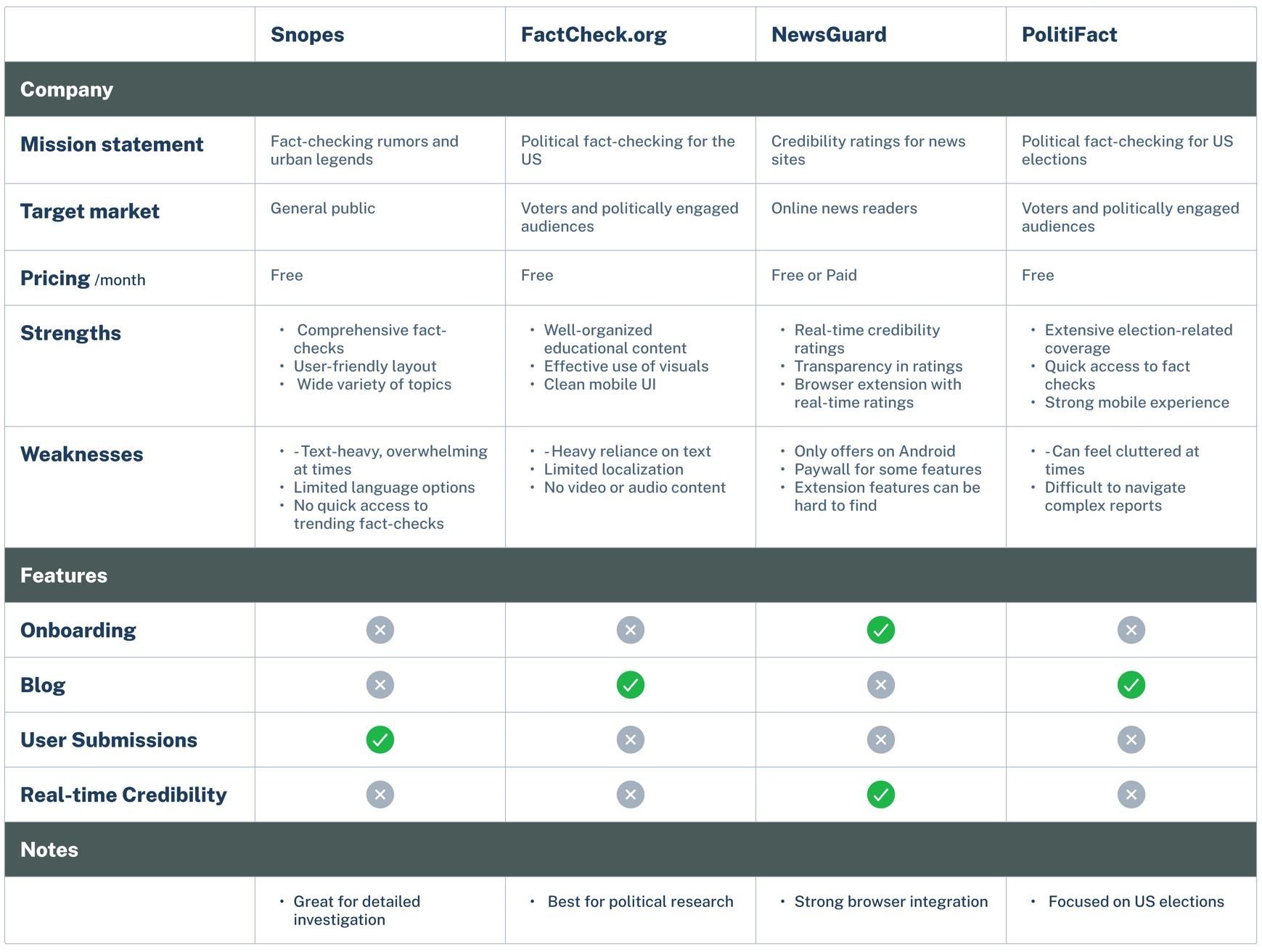Mobile App Design
What is Loop?
Loop is a real-time fact-checking platform designed to help users verify political content seamlessly within their social media feeds. LOOP empowers users to critically engage with the news they consume by integrating credibility indicators and community-driven fact-checking.
| Team
Brian Camilo
Melissa Lam
Hansel Noriega
Subham Sharma
| Timeline
Apr 2024
| Tools
Figma, Miro
| My Role
User Research
Overview
The Spread of Misinformation is Uncontrollable
In today’s digital landscape, political misinformation spreads rapidly, making it difficult for users to distinguish fact from fiction. People often encounter unchecked content on social media, leading to misinformed decisions and discussions. Many lack the time or tools to verify information, further fueling the problem.
SOLUTION & MVP
Combating Misinformation Through Real-Time Fact-Checking
Political misinformation spreads rapidly, making it difficult for users to distinguish fact from fiction. Many fact-checking platforms exist but lack real-time capabilities and integration into social media, leaving users vulnerable to misinformation.
Throughout my research, I identified critical gaps and synthesized insights from user interviews, leading to our core MVP features
Real-Time Fact-Checking
Instant verification of political content as users scroll
Community Fact-Checking
Crowdsourced verification for transparency and trust.
Credibility Indicators
Visual cues to help users assess the reliability of a source.
Personalized Fact Alerts
Notifications tailored to users’ interests and concerns
Define
What prevents users from identifying and stopping the spread of political misinformation?
Seconary Research
Frequency of Encountering Misinformation Online by Age
To understand the scale of misinformation, I first looked at user demographics: Who is most affected? Studies show that older adults are more susceptible to misinformation, while younger users, despite being tech-savvy, often struggle with source credibility.
Next, I analyzed how social media accelerates misinformation. Algorithms prioritize engagement, meaning sensationalized or misleading posts spread faster than verified news. This creates an environment where false information thrives.
Finally, I turned to Reddit discussions to explore how people perceive misinformation. Many users expressed frustration about fact-checking being inconvenient or biased.
Survey
After conducting secondary research, I wanted to confirm my findings by surveying the users. The results highlighted how misinformation spreads, where users encounter it, and their need for better fact-checking tools.
Competitive Analysis
To understand existing solutions, I analyzed both direct and indirect competitors, focusing on fact-checking methods, user motivation, and engagement strategies.
Research Synthesis
After conducting user research and analyzing data, I used affinity mapping to identify key themes shaping user challenges. These insights guided the core direction of the design.
Key Findings
Empathize
Identifying user needs and challenges
User Persona
Based on our research, we have identified users who struggle with verifying political information online as our primary user group.
How might we empower users to quickly verify political information without disrupting their browsing experience?
Hand off and Reflection
Improving the User Experience
After presenting key findings and MVP research, I handed off insights and MVPs to designers. These are the wireframes they created based on our research.
Future Iteration
We aim to make fact-checking more intuitive by incorporating AI-powered real-time verification and user-driven credibility scores. We also plan to introduce interactive education tools that empower users to critically analyze misinformation while maintaining an engaging news experience.





















